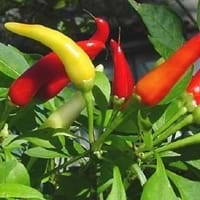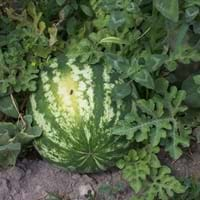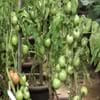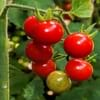Life Span
Annual
Annual and Perennial
Origin
Mexico, Central America, South America
Africa
Types
Not Available
Not Available
Habitat
Open areas
subtropical regions, Tropical regions
USDA Hardiness Zone
Not Available
10-12
Sunset Zone
A1, A2, A3, H1, H2, 1a, 1b, 2a, 2b, 3a, 3b, 4, 5, 6, 7, 8, 9, 10, 11, 12, 13, 14, 15, 16, 17, 18, 19, 20, 21, 22, 23, 24
H1, H2, 1a, 1b, 2a, 2b, 3a, 3b, 4, 5, 6, 7, 8, 9, 10, 11, 12, 13, 14, 15, 16, 17, 18, 19, 20, 21, 22, 23, 24
Habit
Upright/Erect
Prostrate/Trailing
Flower Color
White, Light Yellow, Ivory
Yellow
Flower Color Modifier
Bicolor
Bicolor
Fruit Color
Red, Green, Dark Green
Red, Dark Green
Leaf Color in Spring
Green
Green, Dark Green
Leaf Color in Summer
Dark Green
Gray Green
Leaf Color in Fall
Dark Green, Black
Gray Green
Leaf Color in Winter
Dark Green
Not Available
Leaf Shape
Elliptic
lobed or unlobed
Plant Season
Spring, Summer, Fall
Summer, Fall
Sunlight
Full Sun
Full Sun
Growth Rate
Medium
Very Fast
The pH of Soil
Neutral
Neutral
Soil Drainage
Well drained
Well drained
Bloom Time
Indeterminate
Indeterminate
Tolerances
Drought
Drought
Where to Plant?
Container, Ground, Pot
Ground
How to Plant?
Seedlings, Transplanting
Seedlings
Plant Maintenance
Medium
Medium
Watering Requirements
Do Not over Water
Average Water Needs
In Summer
Lots of watering
Lots of watering
In Spring
Moderate
Moderate
In Winter
Average Water
Average Water
Soil Drainage Capacity
Well drained
Well drained
Sun Exposure
Full Sun
Full Sun
Pruning
Remove damaged leaves, Remove dead branches, Remove dead leaves
Remove damaged leaves, Remove dead branches, Remove dead leaves
Fertilizers
All-Purpose Liquid Fertilizer
All-Purpose Liquid Fertilizer
Pests and Diseases
fungus, Verticillium Wilt, Viruses
Grasshoppers, Worms
Plant Tolerance
Drought
Drought
Flowers
Insignificant
Showy
Flower Petal Number
Single
Single
Foliage Texture
Medium
Medium
Foliage Sheen
Glossy
Matte
Attracts
Not Available
Bees, Birds, Butterflies
Allergy
Hives, Rash
Analgesic, Anti-inflammatory, Antimicrobial, Antioxidants
Aesthetic Uses
Showy Purposes
Not Available
Beauty Benefits
Not Available
Not Available
Environmental Uses
Air purification
Air purification
Medicinal Uses
Diphtheria, Gout, Malignant Scarlet Fever, Paralysis
Cardiac, Urinary problems
Part of Plant Used
Fruits
Fruits, Leaves, Seeds
Other Uses
Used As Food
Oil is used in perfume, soaps, creams, etc., Used to make juice
Used As Indoor Plant
No
No
Used As Outdoor Plant
Yes
Yes
Garden Design
Container, Edible, Herb / Vegetable, Tropical
Edible, Fruit / Fruit Tree, Herb / Vegetable, Tropical, Vine
Botanical Name
CAPSICUM annuum 'Serrano'( Longum Group)
CITRULLUS lanatus 'Sugar Baby'
Common Name
Hot Chili Pepper, Serrano Pepper
Sugar Baby Watermelon, Watermelon
In Hindi
Serrano Kali Mirch
Sugar Baby Watermelon
In German
Serrano Pfeffer
Sugar Baby Watermelon
In French
Piment serrano
Sugar Baby Watermelon
In Spanish
Chile serrano
Sugar Baby Watermelon
In Greek
Serrano pepper
Ζάχαρη μωρό Καρπούζι
In Portuguese
Serrano pimenta
Sugar Baby Watermelon
In Polish
Serrano pieprz
Arbuz Baby cukru
In Latin
Serrano piperis
Sugar Baby Watermelon
Phylum
Anthophyta
Embryophyta
Class
Not Available
Dicotyledonae
Order
Solanales
Cucurbitales
Family
Solanaceae
Cucurbitaceae
Clade
Asterids, Eudicots
Angiosperms, Eudicots, Rosids
Tribe
Capsiceae
Benincaseae
Subfamily
Solanoideae
Cucurbitoideae
Number of Species
Not Available
Importance of Serrano Pepper and Sugar Baby Watermelon
Want to have the most appropriate plant for your garden? You might want to know the importance of Serrano Pepper and Sugar Baby Watermelon. Basically, these two plants vary in many aspects. Compare Serrano Pepper and Sugar Baby Watermelon as they differ in many characteristics such as their life, care, benefits, facts, etc. Every gardener must at least have the slightest clue about the plants he wants to plant in his garden. Compare their benefits, which differ in many ways like facts and uses. The medicinal use of Serrano Pepper is Diphtheria, Gout, Malignant Scarlet Fever and Paralysis whereas of Sugar Baby Watermelon is Cardiac and Urinary problems. Serrano Pepper has beauty benefits as follows: Not Available while Sugar Baby Watermelon has beauty benefits as follows: Not Available.
Compare Facts of Serrano Pepper vs Sugar Baby Watermelon
How to choose the best garden plant for your garden depending upon its facts? Here garden plant comparison will help you to solve this query. Compare the facts of Serrano Pepper vs Sugar Baby Watermelon and know which one to choose. As garden plants have benefits and other uses, allergy is also a major drawback of plants for some people. Allergic reactions of Serrano Pepper are Hives and Rash whereas of Sugar Baby Watermelon have Analgesic, Anti-inflammatory, Antimicrobial and Antioxidants respectively. Having a fruit bearing plant in your garden can be a plus point of your garden. Serrano Pepper has showy fruits and Sugar Baby Watermelon has showy fruits. Also Serrano Pepper is not flowering and Sugar Baby Watermelon is not flowering . You can compare Serrano Pepper and Sugar Baby Watermelon facts and facts of other plants too.





